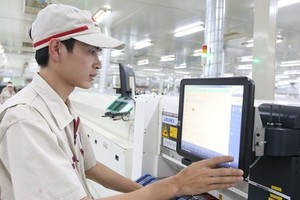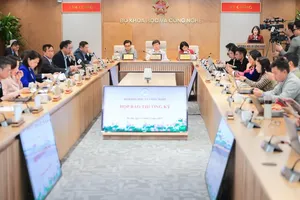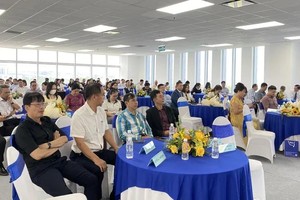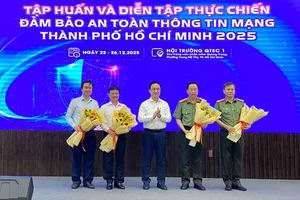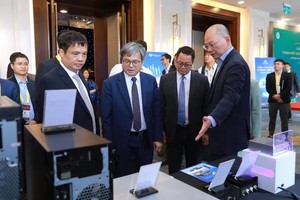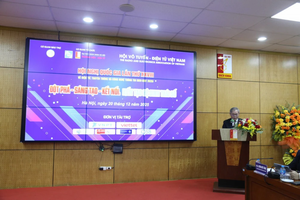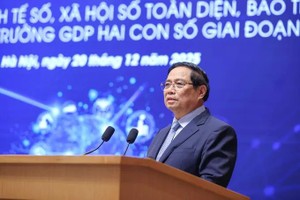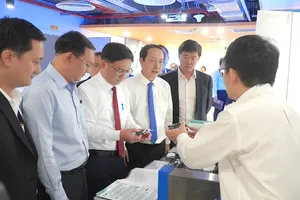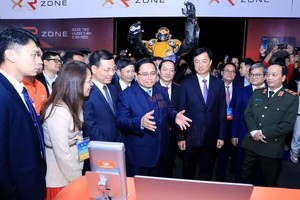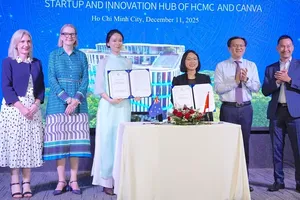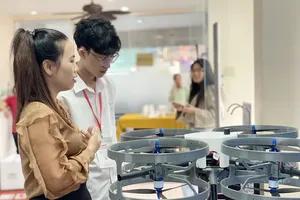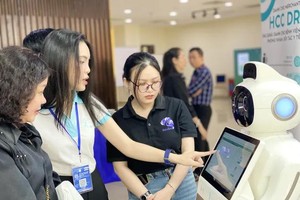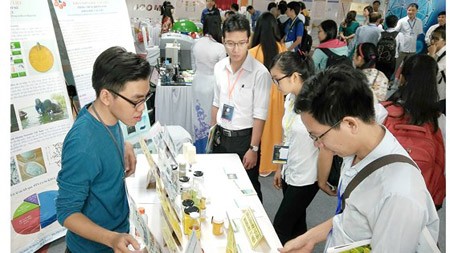
Presently, these two 10-year-old centers not only provide rented land with attractive advantages to technological companies, they are also the birthplace of various innovative products to stay ahead in the science-technology field.
QTSC is now accommodating 160 enterprises on software, digital content, information technology services, as well as startup ones, with the total registered business capital of over VND2,600 billion (approx. $112 million). The comprehensive revenues in 2018 of those organizations reached VND10,000 billion ($430.6 million), an increase of 2.5 times compared to 2014. The income from export activities accounted for most of this amount with the value of nearly $350 million, a rise of 38.7 percent compared to 2017.
Evaluation from the Department of Information Technology shows that QTSC, being the first of this kind in Vietnam, is the most successful technological center in the whole country and is highly appreciated in the region.
Director of QTSC Lam Nguyen Hai Long shared that in the first 10 years of operation, his organization witnessed the domination of foreign businesses. However, among the 160 enterprises sited there now, more than 100 are domestic ones.
Noticeably, QTSC does not merely focus on software development. It has paid more attention to researching and manufacturing new products to serve various technological industries like mechatronics or communications. A lot of Vietnamese companies here are shifting to innovation, creating technological solutions and products themselves instead of ordering from foreign ones.
To better support enterprises sited in the center, QTSC itself has developed services like a remote data collection system for electric meters, Smart Water – a technological management solution to monitor water meters of customers and to automatically collect necessary data in order to issue a regular bill, or a smart lighting system.
QTSC Director suggested that the government should create preferential mechanisms and policies to foster free creativity among enterprises located in QTSC.
SHTP until now has issued investment certificates for nearly 150 projects, 93 of which are domestic ones and the other 55 are Foreign Direct Investment ones (FDI). SHTP welcomed leading international hi-tech organizations like Intel, Sanofi, Samsung, Schneider, Datalogic, and Jabil.
In 2018, SHTP held on-site meetings with 81 investors, investment consultation firms, and international investment promotion organizations. The hi-tech manufacturing industry attracted the most attention, accounting for 49.38 percent, followed by the Research & Development group at 25.92 percent, and then the service and trading industry or infrastructure development.
Domestic businesses sited in SHTP have been able to develop profitable products like WMC-01, Reader WMC-01, methanol synthesis process from the mixture of hydro and carbonic via film piles, Biosuncare – sunscreen protection in the drinking form, TCCheck TC-918 – a tool to monitor water quality online.
The center is now putting heavy focus on the second group, since this is the source of innovation and creativity.
At the present, SHTP possesses cutting edge technologies that are producing profound effects in Industry 4.0 such as 3D printing technology, biotechnology, new material technology, automation and robotics.
Along with the city’s focus on constructing creative urban areas in District 2, District 9, and Thu Duc District, SHTP is going to build an innovative startup ecosystem to become the core of those areas.
Meanwhile, the center has formed 5 laboratories to attract 16 doctors and masters. Simultaneously, its incubation center has supported 25 projects to commercialize successfully, all of which are Vietnamese ones.
The management board of SHTP shared that the center maintains its investment in better scientific-technological infrastructure to meet the current growth here while upgrading the existing transistor technology lab as well as Microelectromechanical Systems (MEMS) equipment. It is going to launch the Hi-tech Incubation Center Construction project.
Obviously, all these actions are to stay ahead in the Industry 4.0 era thanks to digital technologies and integration of smart technologies to optimize manufacturing processes.
